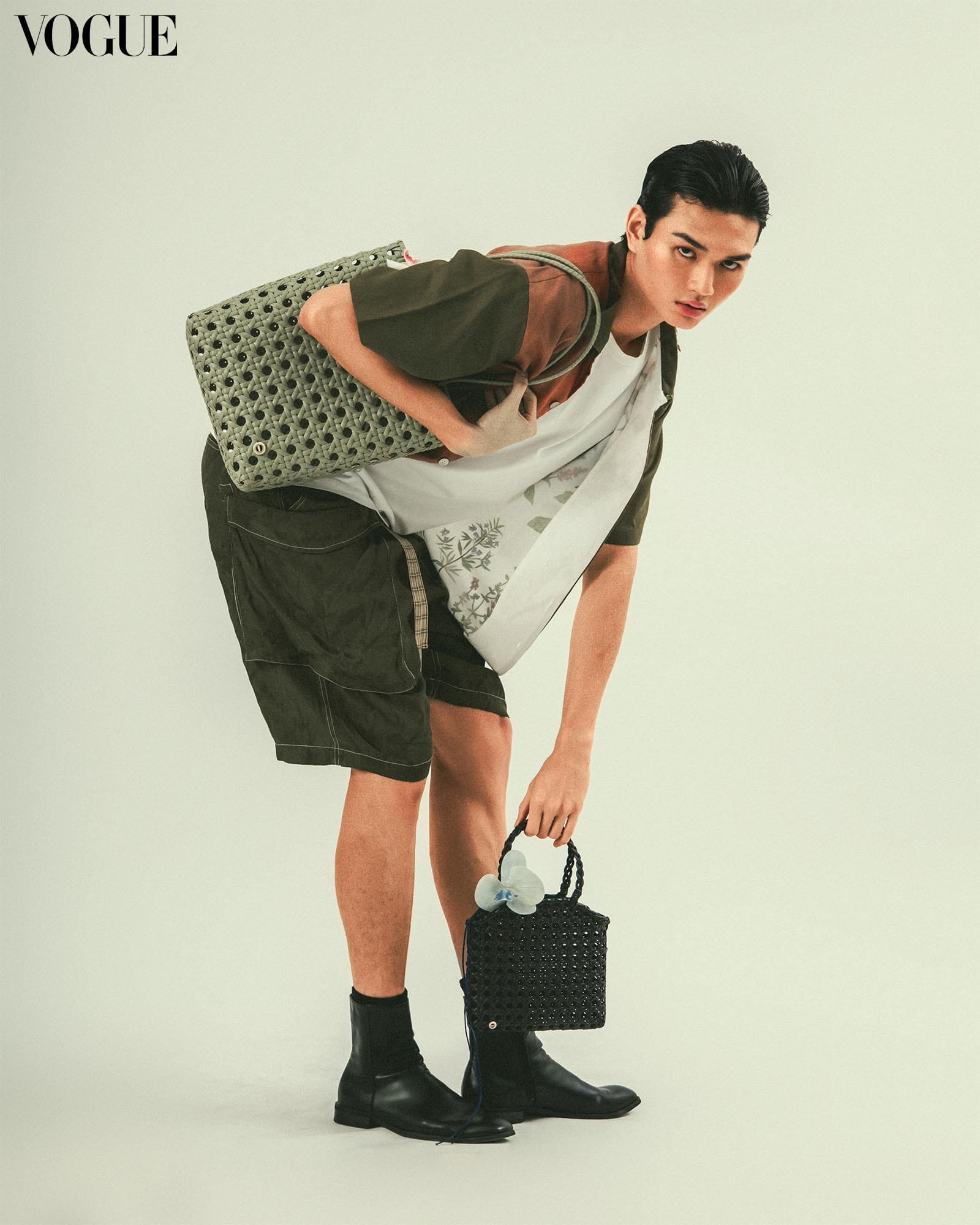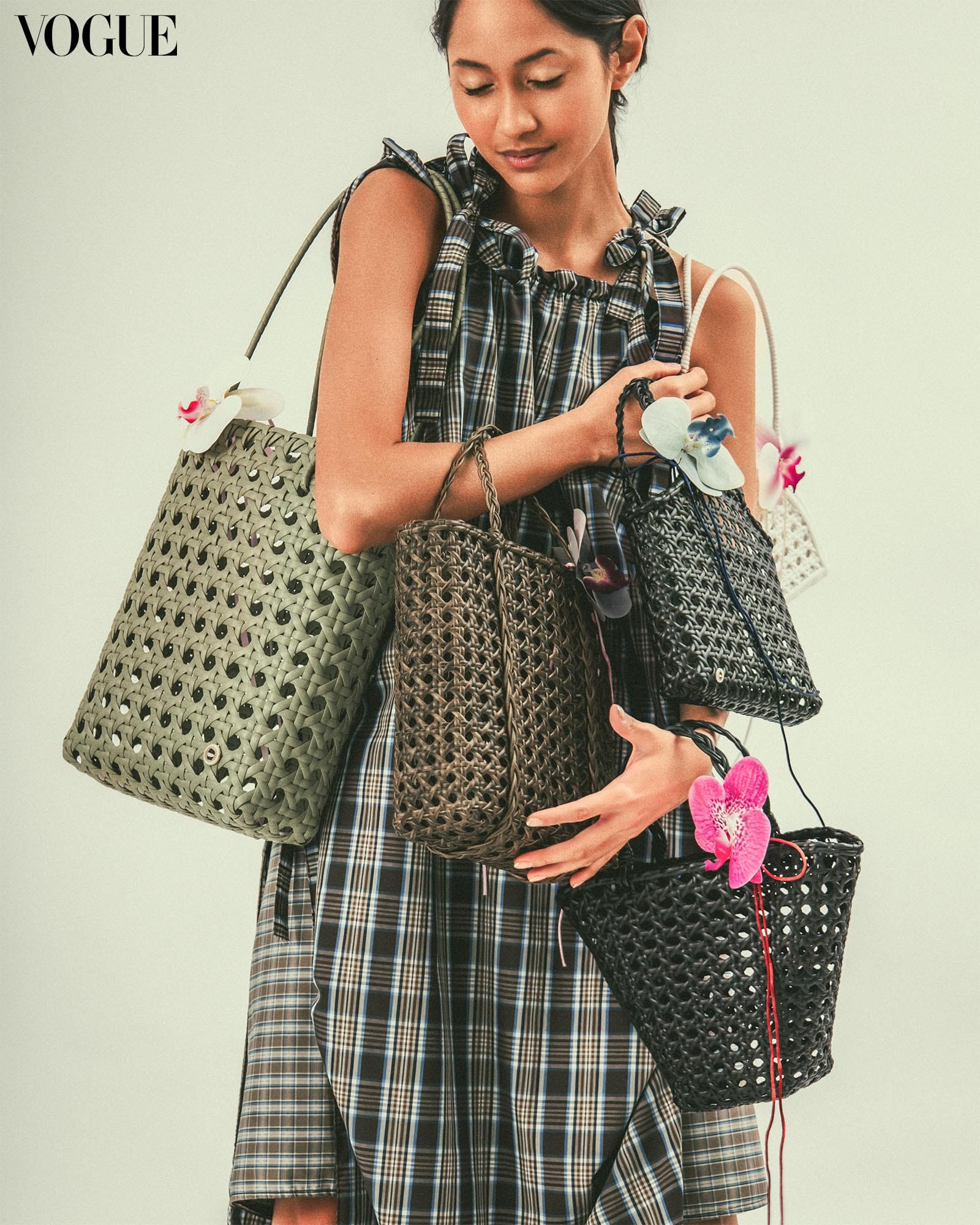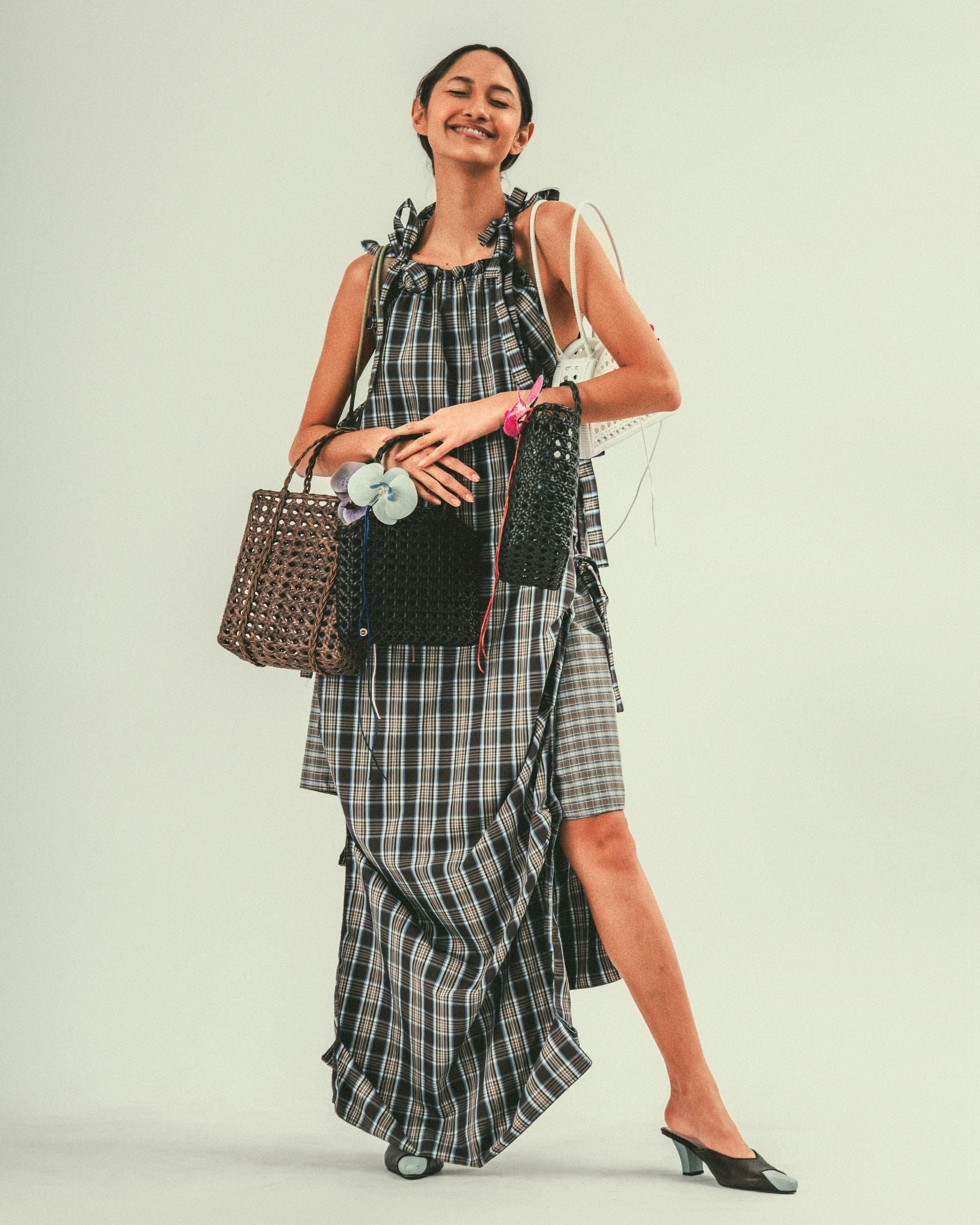Sabrina wears a NOVEL dress available at GUAVA SKETCHES, bags from CAPRICHO, and accessories from MIRRO BEADS. Photo by Joseph Bermudez
Innovating from tradition, Ariana Herranz and Emil Khodaverdi launched Capricho, a line of handwoven bags designed for beach and city life.
Two summers ago, entrepreneurs Ariana Herranz and Emil Khodaverdi visited Cebu, where they visited Khodaverdi’s ancestral home. “In their ancestral house, they have a showroom of his aunt’s [Viro] material, which is mainly used for beach furniture,” Herranz shared. From there, she and Khodaverdi began conceptualizing “Capricho,” a curated line of hand-woven bags designed for both the city and beach life.
Capricho, a Spanish word for “whim,” was the name that came to mind to Herranz’s mind during the conceptualization of the brand. While the bag is designed with functionality in mind, she thought the word was fitting because she also wanted the bags to be more than a “need” but also a “want.”
A fusion of tradition and innovation
Available in different shapes and sizes, Capricho bags are traditional-looking with their unique solihiya weaving pattern. Solihiya, which became popular in the 19th century, is a weaving pattern typically made of rattan. Its distinctive pattern consists of sunburst weaves with holes in the middle. Due to the Philippines’ tropical climate, the pattern rose in popularity, as the holes in the pattern allow air to flow through.
The weave also has a personal connection to Herranz. “It was my personal preference mainly because growing up, I’d see it in my own house. Also, not a lot of people practice that kind of weaving anymore. Nowadays, you’d see the one-by-one weave, which is a running weave. It’s not like the solihiya, which is circular,” she shared.

As for the material, Khodaverdi shared that they were looking for something that could be used “everywhere and anywhere.” With this in mind, Capricho bags are created with Viro, a polyethylene-based fiber known for its high flexibility, tensile strength, and UV and weather resistance. The material was designed to be used for outdoor use, ideal for patio or garden furniture as it can withstand pouring rain or sweltering heat. “It’s all weatherproof because the material is literally meant to be sat on or used to put heavy stuff on, so it’s very durable,” Herranz said. In addition to its durability and weather-resistant properties, Viro fiber is also completely colored throughout, ensuring that the colors won’t fade or smudge over time.
According to Khodaverdi, using Viro fibers also lessens the need to use rattan. “You can’t go wrong with natural [fiber] but I think using this type of fiber, the synthetic fiber, gives the natural rattan a chance to replenish. Because here in the Philippines, a lot of indoor furniture companies use natural rattan,” he said. Herranz also added that, unlike rattan, Viro fibers are also smoother and don’t break down over time or mold when they get wet.
The making of Capricho bags
Both Herranz and Khodaverdi head the design process of Capricho bags. “The more feminine bags I come up with and Emil comes up with the more gender neutral bags,” Herranz shared. Then, working with weavers from various areas of Cebu, they deliver the materials and tools needed to craft the Capricho bags. The manufacturing process takes roughly five days, depending on the bag designs.
Their crescent-shaped bag named “Diana” takes the longest to make. “The crescent bag takes four to five days to make, depending on the weavers also, because not all the weavers have the same skill set,” Khodaverdi shared. “And it’s also because it has a frame, which takes a bit longer. It’s more tedious for the weavers,” Herranz added.

This makes it a challenge for Herranz and Khodaverdi to consistently produce enough quantities of Capricho bags. “Initially, we started with a few quantities because it was more of a passion project. We didn’t realize that a certain market would appreciate it, so we didn’t anticipate the inventory,” Herranz shared. She also adds that one of the biggest obstacles is finding more weavers willing to learn the solihiya weave pattern used for Capricho bags.
The deeper roots of Capricho bags
More than its unique design and durability, for Herranz and Khodaverdi, Capricho bags hold a deeper meaning.” “It’s inspirational to see the weavers doing their best to keep that skill and tradition alive because a lot of the younger generations are not keeping up with it,” Khodaverdi said.
“If [people] only realize how much effort is put into each bag. It’s a preservation of the tradition, culture, and hard work of the weavers,” Herranz said. Khodaverdi adds more to this sentiment. “They’re buying a piece of art. It’s really what the bag represents,” he said. With laughter, he added, “I’m going to make a story, a film, showing what it takes to make these bags. So people can appreciate that.”
- 11 Woven and Straw Bags You Can Take From The Beach to The City
- The Way We Weave: Homegrown Traditions And Techniques
- Add A Touch Of Greenery To The Holidays With Art Director Jann Pascua’s Nature-Inspired Gift Ideas
- The Thoughtful Holiday Gift Guide: A Book for Every Citizen of the Internet by Digital Editor Andrea Ang
